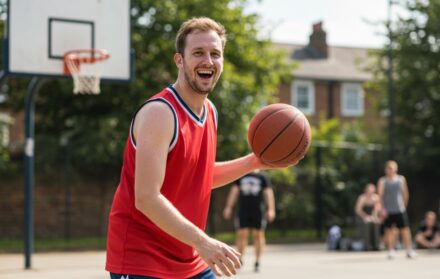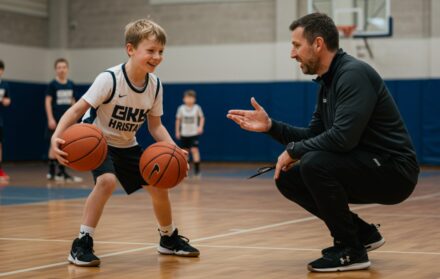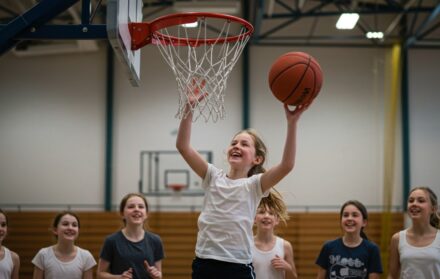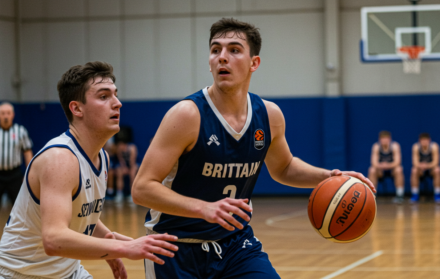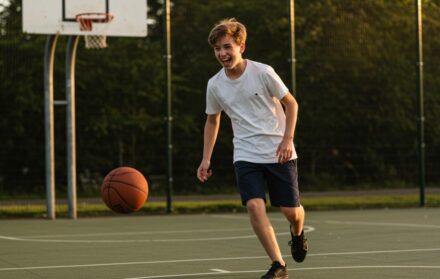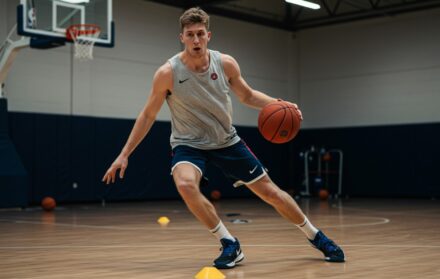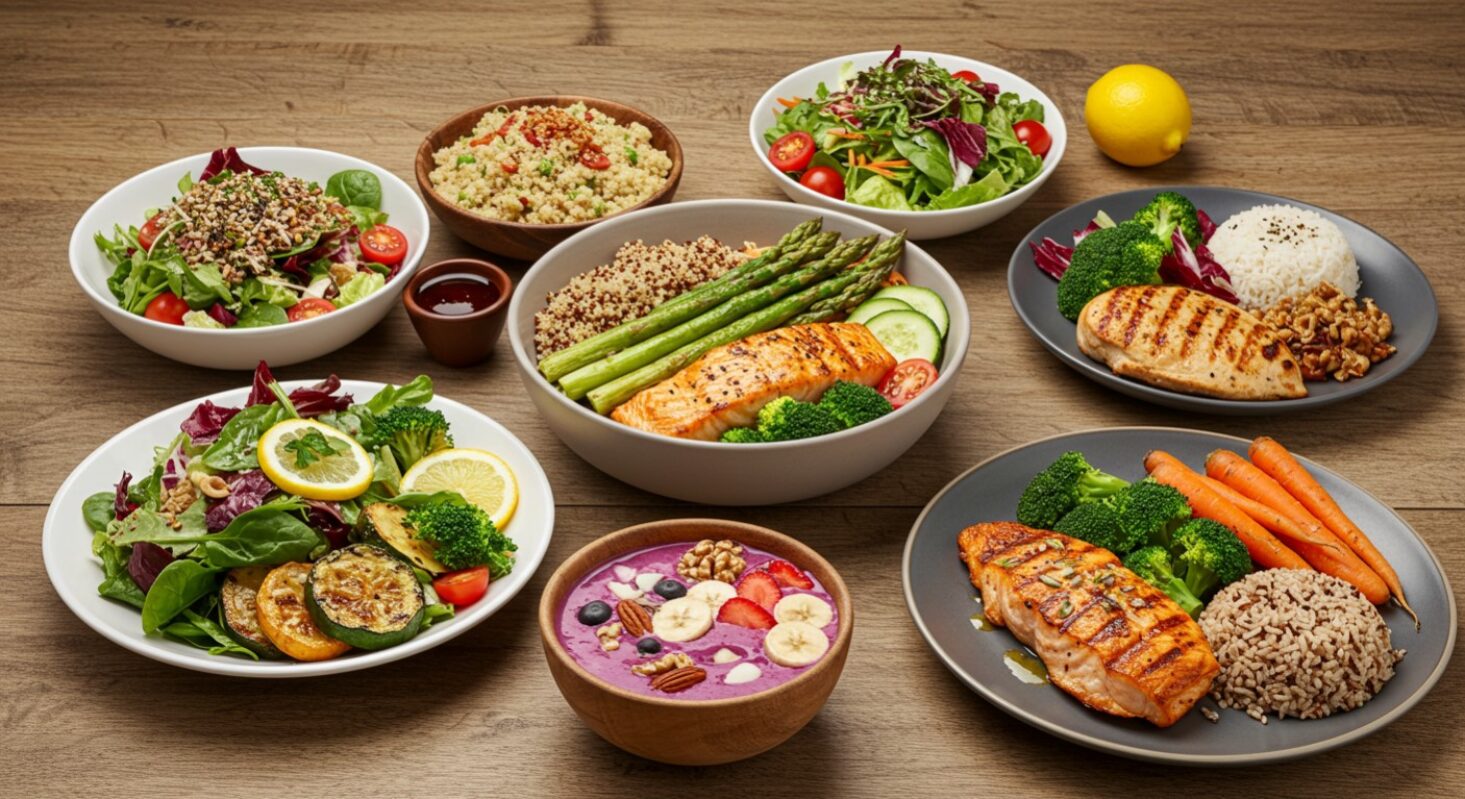
What Does a Basketball Players’ Diet Look Like?
Basketball is one of the most physically demanding team sports in the world. Every possession can involve sprinting from baseline to baseline, sharp cuts to lose a defender, and explosive jumps to grab a rebound or block a shot. Add in the grind of training sessions, travel, and back-to-back games, and it becomes clear that players need more than skill and fitness — they need fuel.
A basketball player’s diet is not just about maintaining a lean physique or fitting into a jersey. What goes on a player’s plate influences shooting accuracy, endurance in the closing minutes, ability to recover from muscle soreness, and even the likelihood of injury. Nutrition, quite literally, is performance. This is why many coaches and sports scientists emphasise following a structured basketball players’ diet as part of overall training.
This article offers a practical look at what basketball players eat and why. From the role of macronutrients to the importance of hydration, from meal plans to budget-friendly options, it serves as a basketball nutrition guide for players of all ages and levels.
The Building Blocks of a Player’s Diet
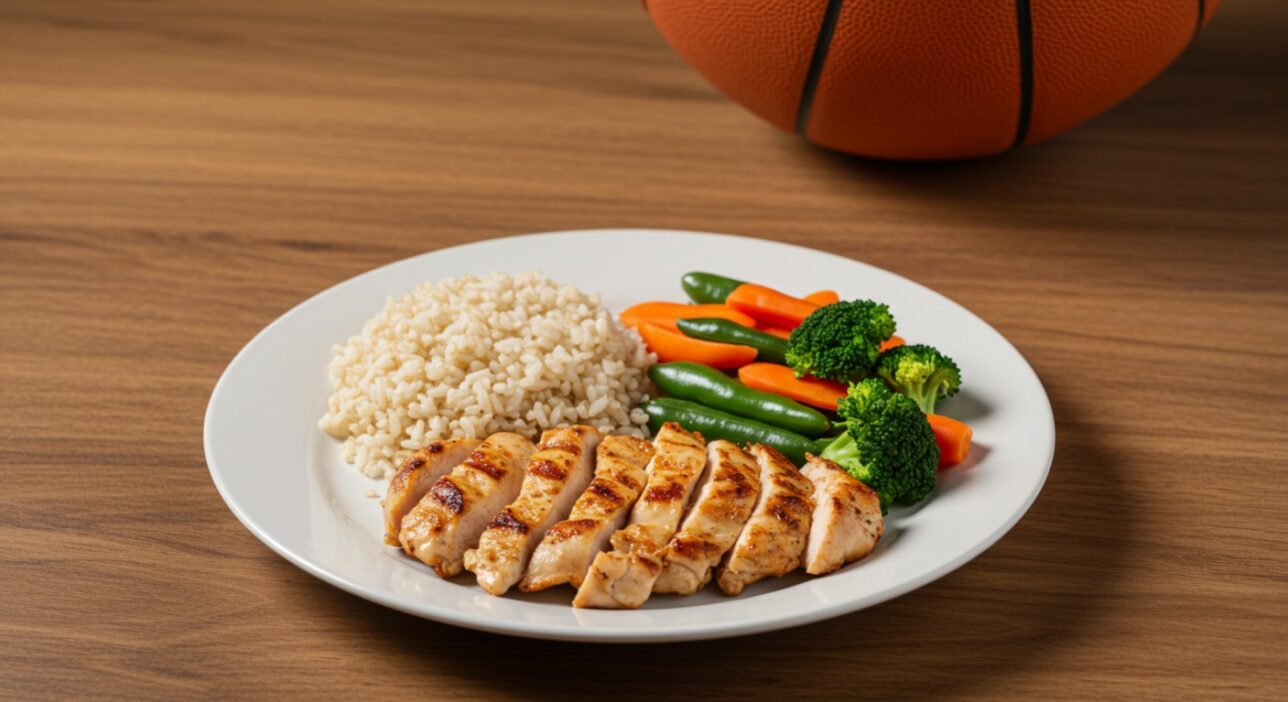
Every effective basketball player diet rests on four foundations: carbohydrates, protein, fats, and hydration. Together, these create the energy and recovery framework a player needs.
-
Carbohydrates: The body’s primary fuel. Basketball is a stop-start sport powered by glycogen stored in the muscles. Whole grains, fruits, and vegetables supply the steady energy players need, while quick-digesting carbs like bananas or rice cakes top up stores closer to tip-off.
-
Proteins: Essential for repairing and rebuilding muscles after training or games. Lean meats, fish, eggs, beans, and dairy products all contribute. Without adequate protein, recovery slows, and performance declines.
-
Healthy Fats: Often misunderstood, but vital. Fats regulate hormones, support long-term energy needs, and keep the brain sharp for decision-making under pressure. Avocados, nuts, seeds, and olive oil should be part of a player’s daily intake.
-
Hydration: Sometimes called the “forgotten nutrient.” Basketball players sweat heavily in fast-paced indoor environments. Without replacing both fluids and electrolytes, they risk cramps, fatigue, and impaired focus.
The key to a balanced diet is not leaning too heavily on one nutrient but combining all four consistently.
How Eating Changes with the Basketball Calendar
A basketball player doesn’t eat the same way every day. Intake changes depending on whether it’s a heavy training day, a competitive game day, or a rest day.
-
Training Days: Carbohydrates are front-loaded to fuel drills, scrimmages, and strength sessions. Breakfasts may include oats and fruit, lunches lean protein with rice or pasta, and snacks quick-digesting carbs around workouts. Protein is steady throughout to support muscle repair.
-
Game Days: The diet sharpens. Meals focus on easily digestible carbs two to three hours before tip-off — chicken with rice, pasta with tomato sauce, or a bagel with nut butter. Hydration is carefully monitored. During the game, snacks like bananas or energy gels provide top-ups, while post-game meals emphasise protein and carbs together for recovery.
-
Rest Days: Caloric intake adjusts downward, particularly in carbohydrates. Players prioritise protein, vegetables, and healthy fats to aid recovery and reduce inflammation. This ensures that rest days genuinely support the body instead of undoing progress with unnecessary indulgences.
In this way, nutrition mirrors the rhythm of the basketball calendar, with food acting as both fuel and repair kit.
A Day on a Plate: Sample Meal Plans
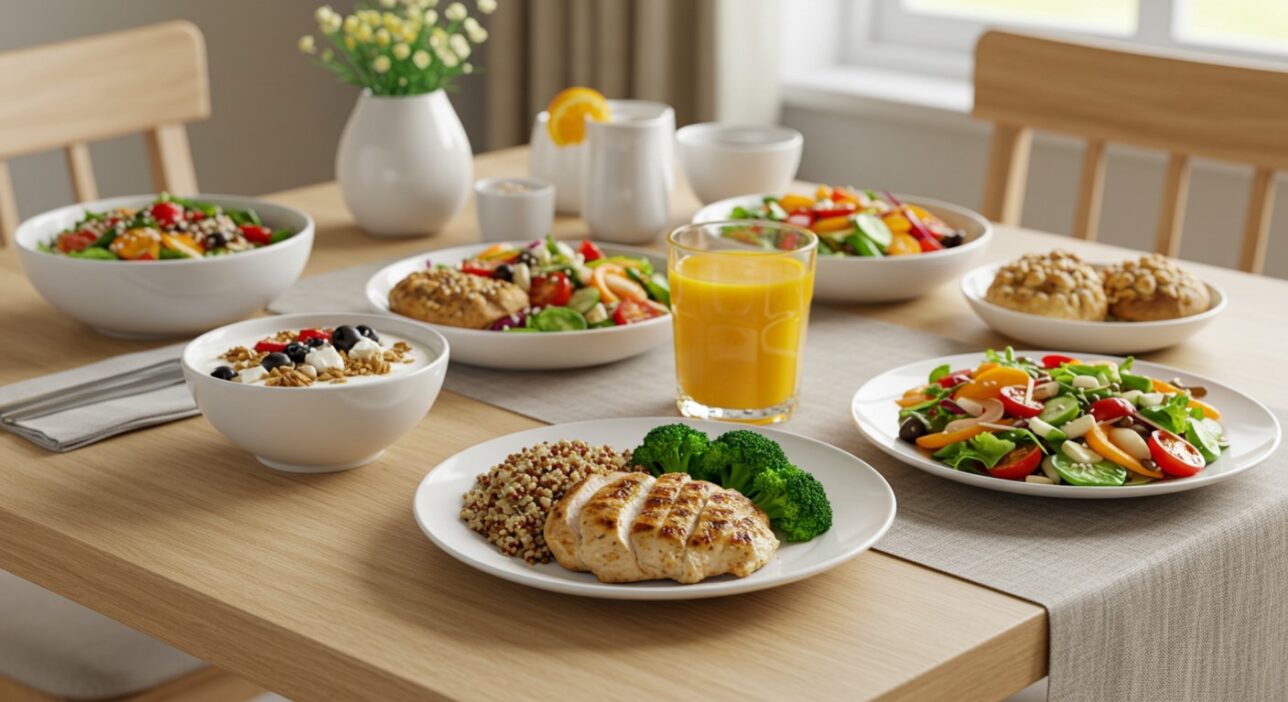
To make this more concrete, here’s an example of a balanced daily meal plan for a basketball player.
-
Breakfast: Oatmeal topped with berries and honey, scrambled eggs, and a glass of milk.
-
Mid-Morning Snack: Banana with a spoon of peanut butter.
-
Lunch: Grilled chicken breast, brown rice, and roasted vegetables.
-
Afternoon Snack: Greek yoghurt with granola and seeds.
-
Dinner: Baked salmon with sweet potato mash and spinach salad dressed in olive oil.
-
Evening Snack (optional): Fruit smoothie or cottage cheese with pineapple.
Variations:
-
Vegetarian option: Replace chicken with lentils or chickpeas at lunch; substitute salmon with tofu or tempeh at dinner.
-
Budget-conscious player: Opt for eggs, frozen vegetables, tinned tuna, and beans, which are affordable yet nutrient-dense.
The point is not to copy meals exactly but to see how balance works across the day: carbs for energy, protein for repair, fats for support, and hydration throughout.
Extended Meal Plan: Game Day, Training Day & Rest Day
To understand how diet shifts across the basketball calendar, here’s a three-day example that mirrors the rhythm of competition.
1. Game Day (High Energy & Easy Digestion)
Game day meals prioritise carbs for fuel and simple foods that won’t weigh players down.
-
Breakfast (3–4 hours before game): Wholegrain toast with scrambled eggs, banana, and a small bowl of oatmeal with berries.
-
Snack (90 minutes before): Rice cakes with honey or a banana smoothie.
-
During Game: Water, sports drink for electrolytes, and sliced fruit at half-time.
-
Post-Game Recovery: Chocolate milk or protein shake within 30 minutes.
-
Dinner (after game): Grilled chicken, white rice, and roasted vegetables.
-
Evening Snack (optional): Yoghurt with fruit or a recovery smoothie.
Focus: quick energy, easy digestion, rapid recovery.
2. Training Day (Fuel + Recovery Balance)
On heavy training days, players need more complex carbs early and consistent protein throughout the day.
-
Breakfast: Oatmeal with nuts and honey, plus scrambled eggs.
-
Mid-Morning Snack: Apple with peanut butter.
-
Lunch: Brown rice with turkey breast and stir-fried vegetables.
-
Pre-Training Snack: Protein bar or banana with almond butter.
-
Post-Training Meal: Protein shake with banana + wholegrain wrap with chicken and avocado.
-
Dinner: Salmon, sweet potato, and steamed broccoli.
-
Evening Snack: Cottage cheese with pineapple or chia pudding.
Focus: refuelling glycogen stores while repairing muscle.
3. Rest Day (Lower Carbs, More Protein & Micronutrients)
On rest days, the body still needs fuel, but less carbohydrate and more focus on nutrients for recovery.
-
Breakfast: Greek yoghurt parfait with granola and berries.
-
Snack: Handful of mixed nuts and an orange.
-
Lunch: Grilled fish, quinoa, and large salad with olive oil dressing.
-
Afternoon Snack: Hummus with carrot and cucumber sticks.
-
Dinner: Lean beef or lentil curry with spinach and cauliflower rice.
-
Evening Snack: Herbal tea and a protein smoothie (if needed).
Focus: recovery, micronutrients, avoiding excess calories.
Youth vs Professional Diets
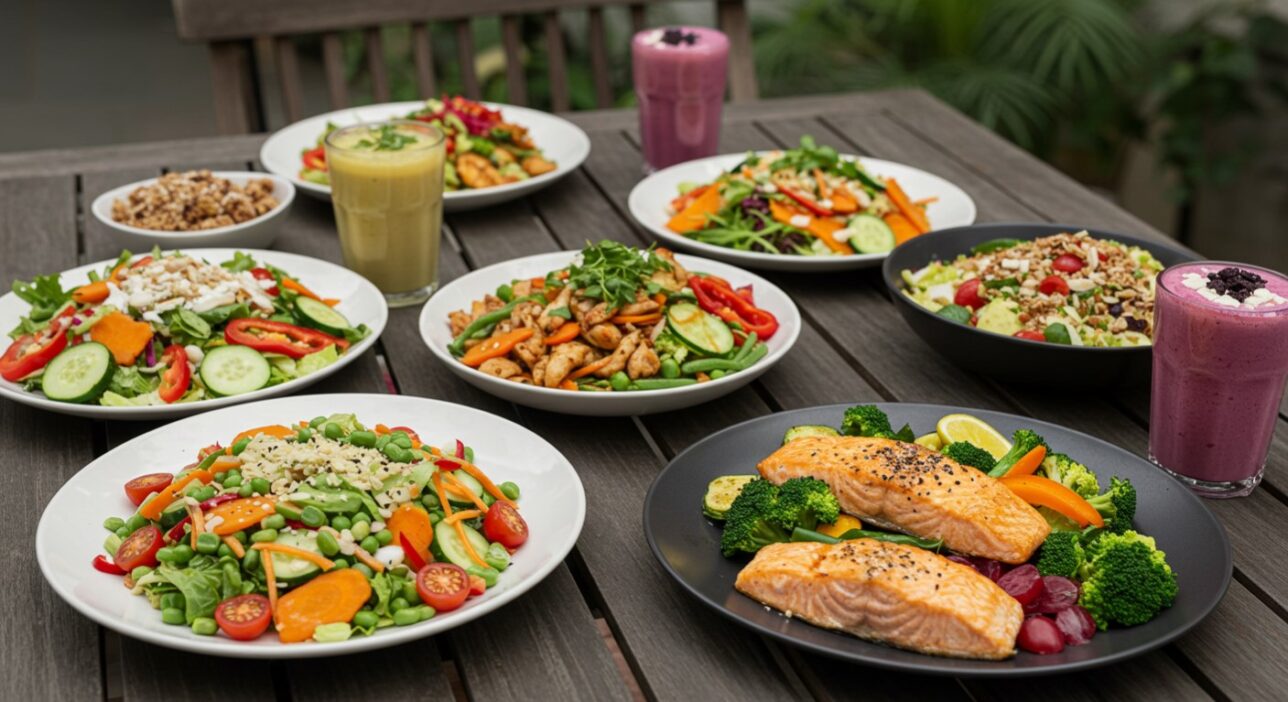
Diet looks different depending on a player’s stage of development.
| Level | Key Focus | What They Eat | Notes |
|---|---|---|---|
| Kids & Teens | Growth and enjoyment | Balanced meals with carbs, protein, and fruit/veg | Avoid supplements; make food fun |
| College & Amateurs | Structured eating for performance | Measured portions, timing around training | Start monitoring macros and hydration |
| Professionals | Precision and customisation | Personalised plans from chefs and nutritionists | Nutrition tailored to game schedule, travel, and body composition |
For youth athletes, the priority is healthy growth and skill-building. For adults in competitive leagues, diet becomes a performance tool. For professionals, it’s almost a science.
Special Considerations for Different Players
Not all basketball players have the same needs. Diets can be tailored by playing position, body type, and health status.
-
Guards: Rely on speed and agility, so their diets emphasise lighter meals, quick-digesting carbs, and hydration to avoid feeling heavy.
-
Forwards and Centres: With larger frames and physical demands in the paint, they need higher calorie intakes, more protein for muscle maintenance, and stronger recovery strategies.
-
Injured Players: Nutrition can aid healing. Anti-inflammatory foods such as oily fish, berries, leafy greens, and turmeric help reduce swelling and speed recovery.
This personalisation prevents the “one-size-fits-all” mistake and ensures each player is fuelled for their unique demands.
Hydration & Recovery Strategies
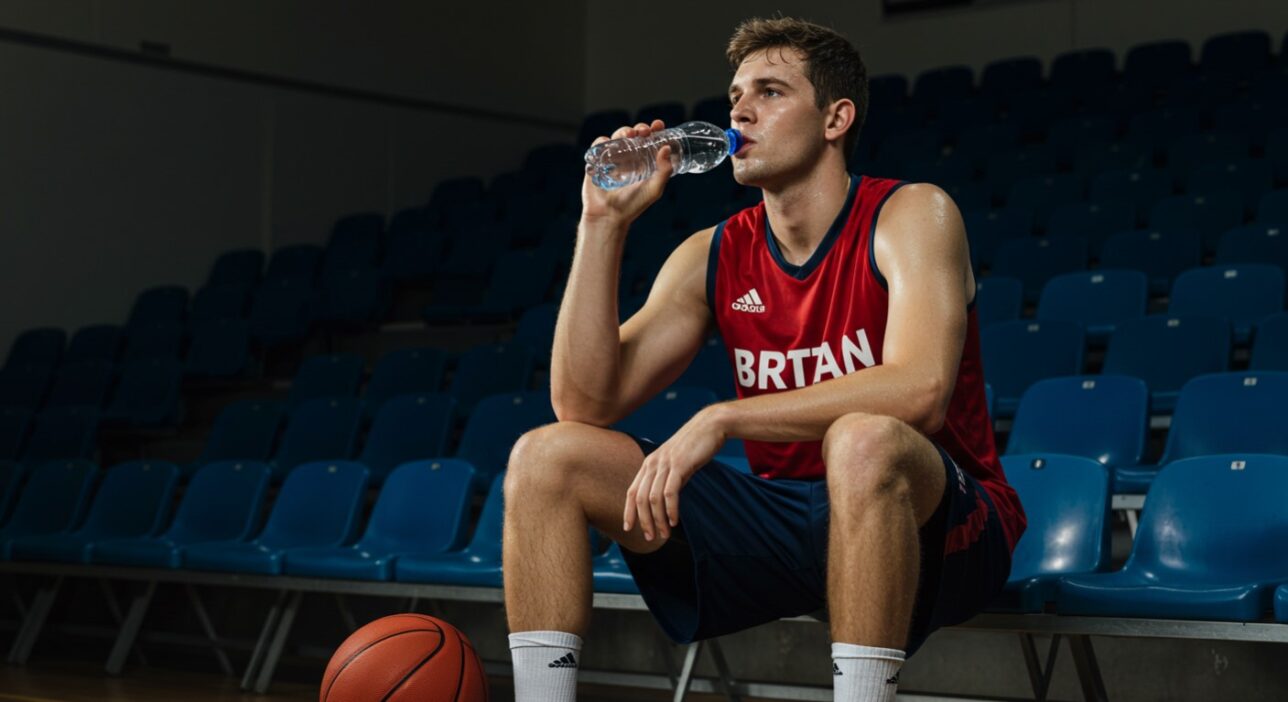
Hydration deserves its own spotlight because of basketball’s intensity. On average, players can lose one to two litres of sweat per game. Water is essential, but electrolytes are equally important. Sodium, potassium, and magnesium regulate muscle contraction and prevent cramps.
Recovery drinks can be simple — chocolate milk has long been popular for its carb-protein balance. Smoothies made with fruit, yoghurt, and protein powder are another effective option.
Signs of dehydration include fatigue, headaches, slower reactions, and even reduced shooting accuracy. Coaches often remind players that drinking starts well before stepping onto the court.
Supplements: Do Players Really Need Them?
The foundation of nutrition for basketball players must always be whole foods. Supplements are optional additions, not replacements.
-
Whey protein helps players meet post-training protein needs.
-
Creatine may support strength and explosiveness.
-
Omega-3 aids joint health and recovery.
-
Vitamin D is sometimes necessary in colder climates with limited sunlight.
However, supplements carry risks if unverified. Poor-quality products may contain banned substances, making professional guidance essential.
Real-World Inspirations: How Pros Eat
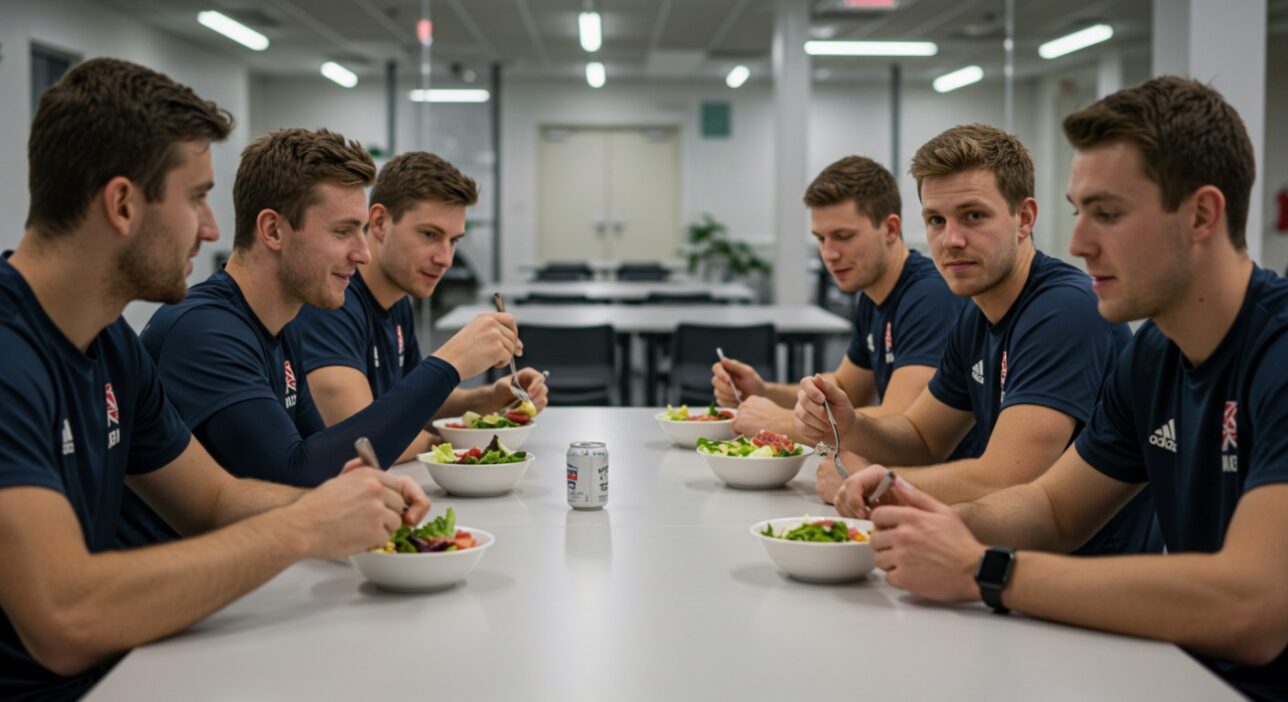
Professional players often share insights into their diets. LeBron James has spoken about maintaining a balance of lean proteins, vegetables, and complex carbs to sustain longevity. Steph Curry emphasises hydration and pre-game fuelling.
In-season, pros eat for recovery almost as much as performance. Off-season, diets may shift towards leaner meals to maintain conditioning while reducing training loads.
Travel creates further challenges. Long flights and hotel stays force players to be adaptable — relying on portable snacks, careful hydration, and finding healthy options on the road.
Budget-Friendly Basketball Nutrition
Not every player has access to personal chefs or expensive organic produce. Fortunately, basketball nutrition doesn’t have to break the bank.
Affordable staples include oats, eggs, beans, lentils, frozen vegetables, rice, and chicken thighs. Batch cooking — preparing large amounts of rice, pasta, or roasted vegetables in advance — saves time and money. Parents of young athletes can also lean on bulk purchases and simple recipes to provide consistent fuel.
Smart planning ensures performance diets remain accessible to everyone.
Conclusion: What Does a Basketball Players’ Diet Really Look Like?
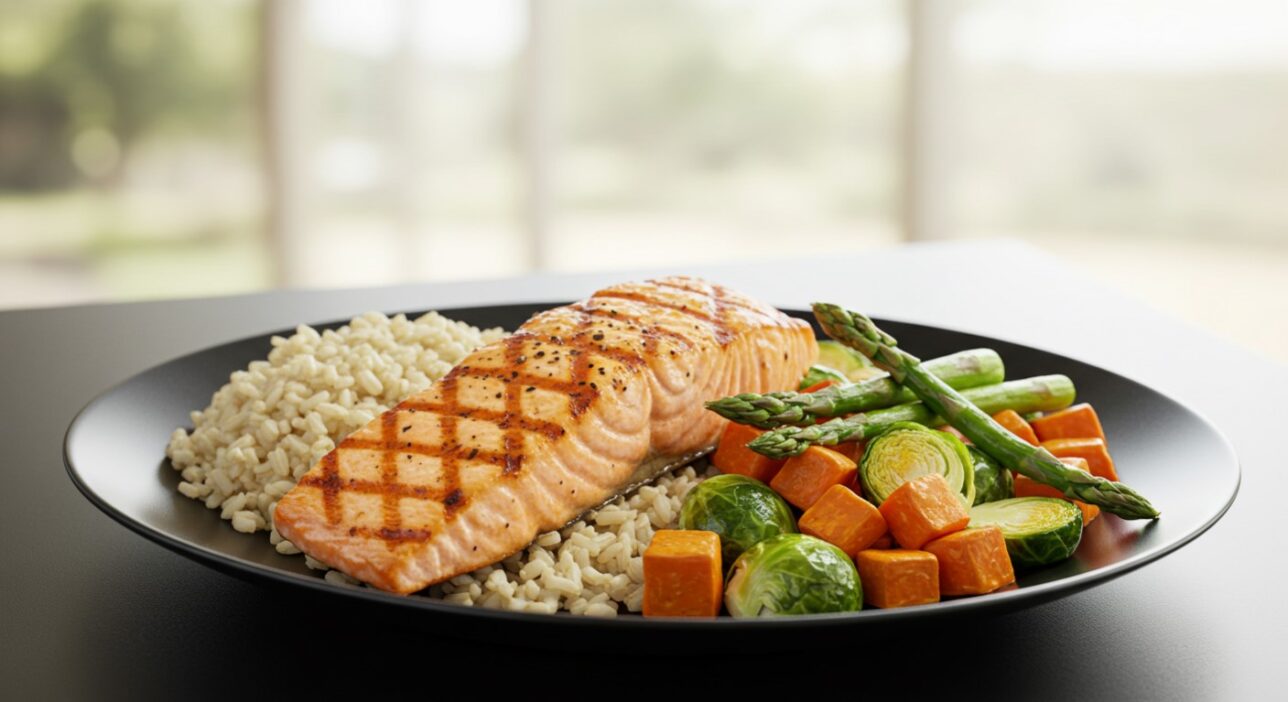
A basketball player’s diet is not a gimmick or a quick fix. It’s the engine that drives performance on the court, recovery off it, and long-term health throughout a career.
The formula remains simple: carbohydrates power movement, proteins repair muscles, healthy fats sustain energy, and hydration keeps everything running smoothly. Add in smart adjustments for training, games, and rest days, and any player — from a child learning layups to a professional chasing championships — can fuel themselves for success.
Eating like a player means playing like a pro. And the earlier those habits are built, the stronger, faster, and more resilient the player becomes.
